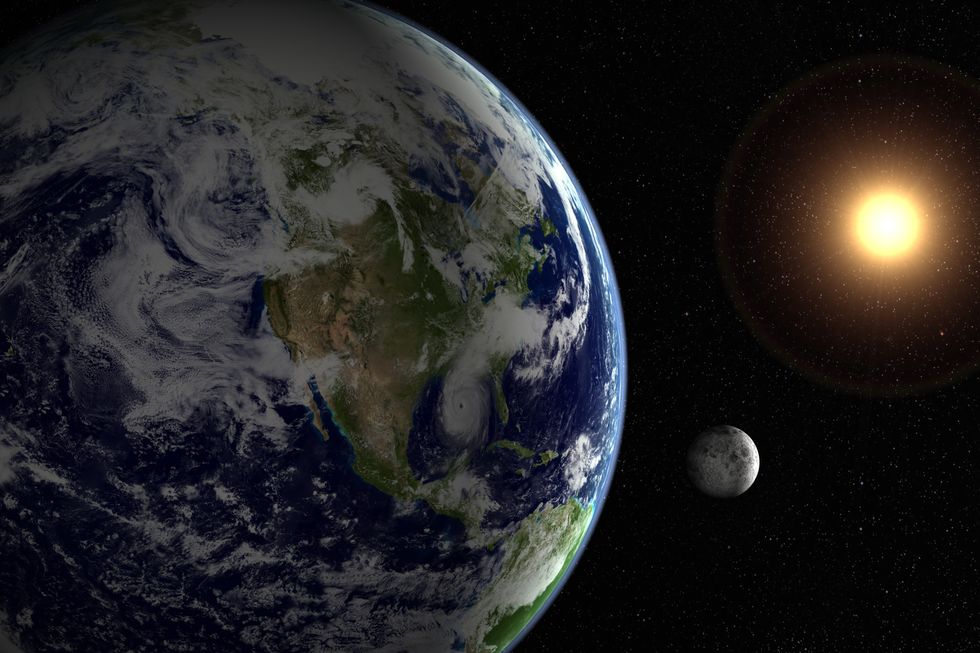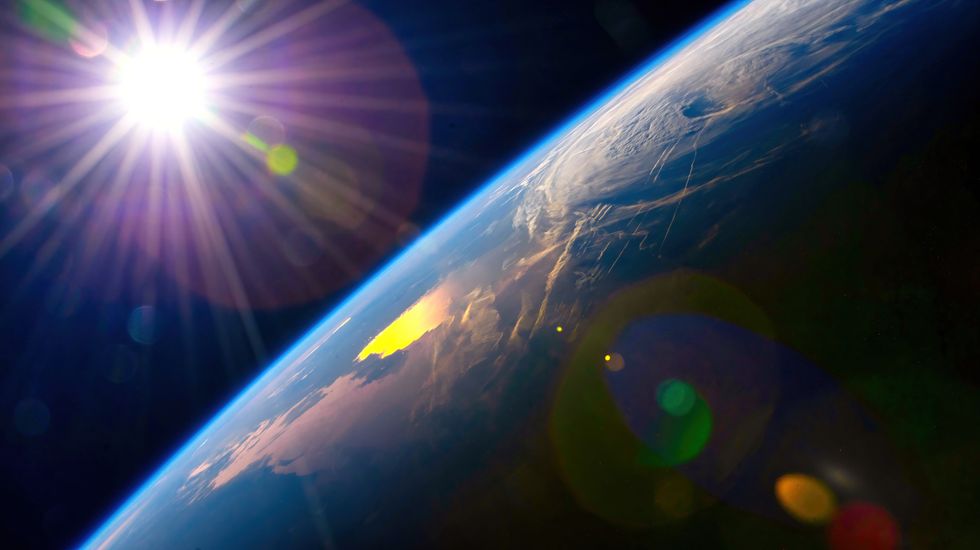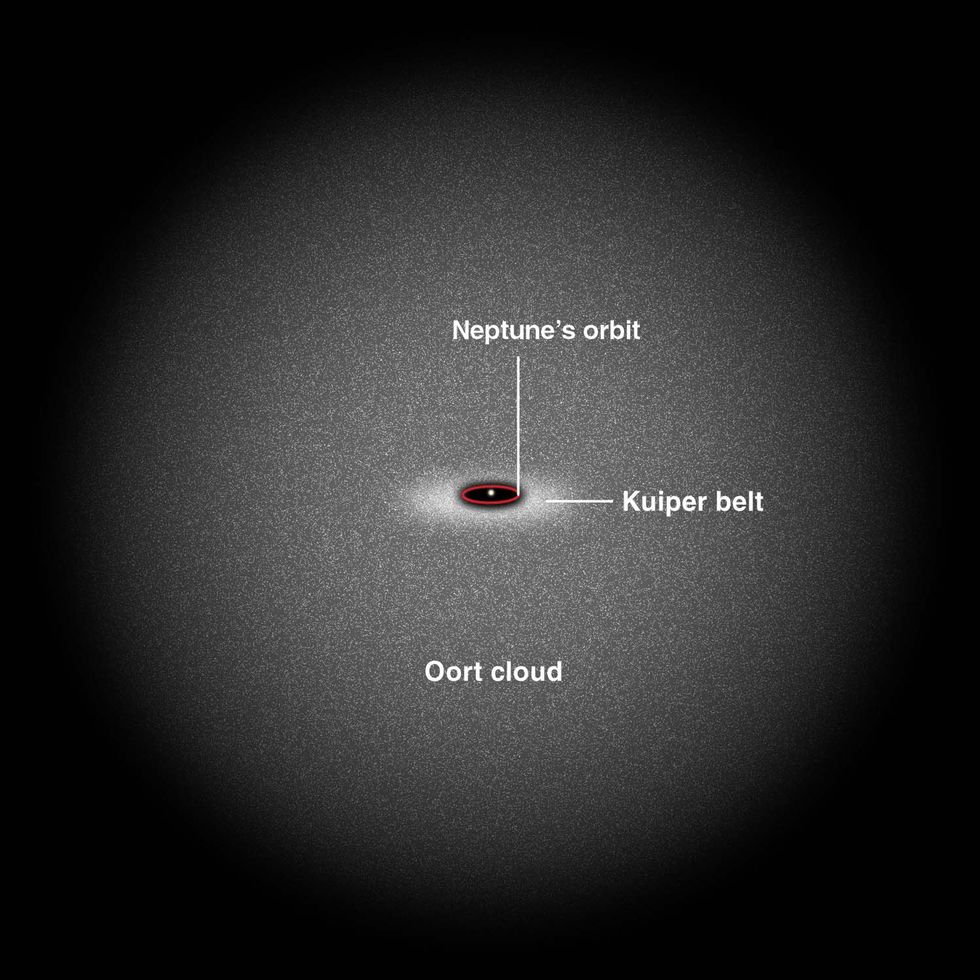Earth could be thrown out of orbit and into the sun by passing star, new research warns: 'Vulnerable to planetary chaos!'

Stellar flybys typically occur every few hundred thousand years
Don't Miss
Most Read
Latest
Earth could be thrown off its orbit either into another planet or the sun, new research has warned.
New research from Durham University has revealed that passing stars pose a greater threat to Earth's stability than previously understood.
According to scientists, there is a minuscule 0.2 per cent chance that our planet could be ejected from the solar system or involved in a catastrophic collision over billions of years.
The study, published in the journal Icarus, found gravitational influences from stars passing within a light-year of our solar system could destabilise planetary orbits.
Researchers Nathan Kaib and Sean Raymond discovered isolated models have been underestimating future orbital changes, indicating planets are less stable than previously thought.
The pair identifies passing stars as the most probable trigger for instability within the solar system over the next four billion years, with potentially devastating consequences for Earth's position relative to the Sun.
Gravitational pull from passing stars could increase Mercury's risk of instability by 50-80 per cent, according to the findings.
More data indicates a 5 per cent chance of chaotic gravitational interactions affecting Pluto over five billion years.
SPACE NEWS LATEST:
Researchers discovered the Earth could be thrown off its orbit
|GETTY
Mars faces approximately 0.3 per cent probability of being lost through collision or ejection from the solar system.
The 0.2 per cent chance of Earth experiencing a planetary collision or ejection represents a higher risk than previous studies suggested.
Durham University astrophysicists used sophisticated simulations incorporating data from the Gaia spacecraft to investigate stellar encounters' effects on planetary stability.
Their modelling showed that a star with mass comparable to our Sun passing within 10,000 astronomical units could significantly disrupt the Oort Cloud, which marks the outer boundary of our solar system beyond Pluto.

Scientists say the chances are only 0.2 per cent should a star pass close enough
|GETTY
Its disruption could potentially trigger orbital alterations among inner planets over millions of years.
Although unlikely and occurring over a timespan of millions of years, historical evidence confirms stellar encounters have occurred before.
Scholz's Star, a dim red dwarf, passed within 0.8 light-years of our solar system approximately 70,000 years ago, though its impact was minimal.
Looking ahead, Gliese 710 is forecast to approach within 10,000 to 20,000 astronomical units of the Sun in roughly 1.3 million years.

A passing star could disrupt the Oort Cloud and send city-destroying comets into the inner solar system
|GETTY
Despite being small and slow-moving, this encounter could disrupt the Oort Cloud and potentially send comets into the inner solar system.
These stellar flybys typically occur every few hundred thousand years.
Even relatively distant approaches can create gravitational effects that accumulate over millions of years, potentially pushing Earth's orbit inward towards the Sun or outward into space.
The timescales involved span millions to billions of years, providing humanity with extensive preparation time should such threats materialise.
Scientists emphasise continuous monitoring through missions like Gaia and the James Webb Space Telescope to track nearby stellar movements and assess gravitational impacts.
The research suggests stable planetary systems like ours may be uncommon throughout the universe.
Binary star systems and densely populated star clusters face even greater instability risks, making Earth's stable orbit particularly remarkable for supporting life.
While direct prevention of stellar movement remains impossible, researchers are developing theoretical approaches for correcting planetary orbits.
These include potential interventions using asteroid flybys or solar sail technology, though such solutions remain purely theoretical at present.










